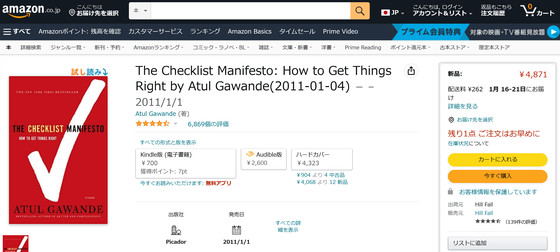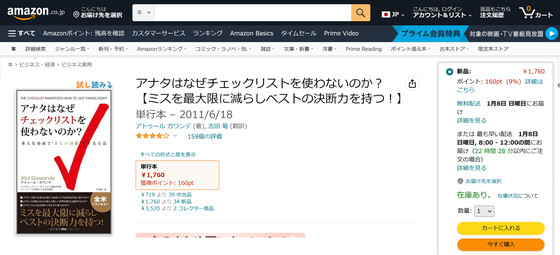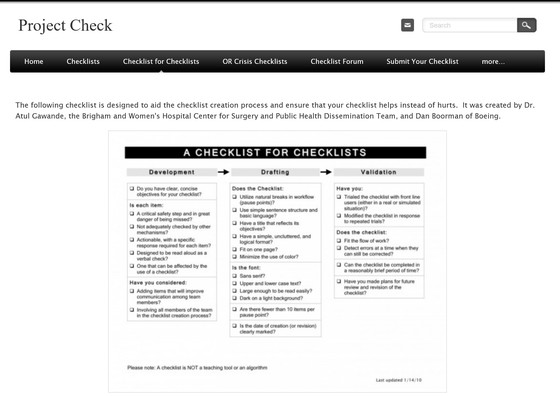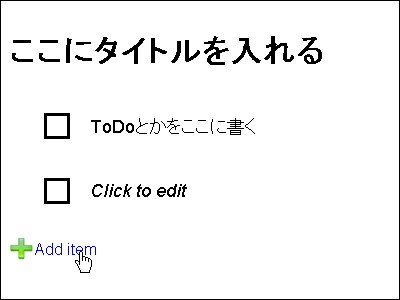Checklist for creating a checklist

When doing a project where a small mistake can lead to a serious accident or loss, creating a 'checklist' of what to do in what order can reduce omissions and mistakes in procedures. However, simply following the checklist may not work well, so the procedures and precautions for creating the checklist are also quite important. World Health Organization (WHO) researcher and physician Atul Gawande wrote in his book
The Checklist Manifesto: How to Get Things Right by Atul Gawande(2011-01-04) | Atul Gawande | Amazon

Why don't you use a checklist? [minimize mistakes and have the best decision! 】 | Atul Gawande, Yoshida Ryu | Amazon

Checklist for Checklists - Project Check
http://web.archive.org/web/20160107010925/http://www.projectcheck.org/checklist-for-checklists.html
In many life-saving medical settings, attention to detail is required, from what to ask patients before surgery to post-operative checks. In 2008, the WHO published a ' surgical safety checklist ' and called for it to be implemented in hospitals around the world. In a WHO trial, following the checklist was effective in reducing the risk of infectious diseases by one-third and reducing the mortality rate by almost half. It was pointed out that there was a flaw in the data measurement method in the test. While supporting the usefulness of the checklist itself, Gawande said, 'The checklist works properly, but only if it is operated properly.'
Why did the ``WHO checklist'', which should drastically reduce medical errors during surgery, not work well in the field? -GIGAZINE

by dolgachov
In Gawande's best-selling book 'The Checklist Manifesto,' Mr. Gawande, who is also a journalist, interviewed doctors, investors, aircraft and construction experts, and other people involved in various large projects, After summarizing the methods of operation and execution, we are considering how to make use of it in the medical field. At the end of the book, posted as an appendix, is that Mr. Gawande cooperates with Boeing's Dan Boorman, an American airline, to ``design the checklist so that it is useful and not harmful.'' The checklist creation process 'Checklist for Checklists'. 'Checklist for Checklists' is posted on the site 'Project Check' that allows access to medical checklists, and is currently inaccessible for each Project Check page, but can be viewed from theInternet Archive .

Checklist for Checklists is divided into three steps: 'Development', 'Drafting' and 'Validation'. First of all, at the stage of 'Development', 'Do you need a checklist in the first place?' . By reviewing the Checklist for Checklists at the checklist preparation stage, clarify the purpose of the checklist and whether or not the absence of the checklist could cause a hazard by missing something, and the checklist rather than other mechanisms. You can see if it's a good fit, and if the checklist has been created by everyone on the project team and is in a position to make sure everyone understands it.

Next, in 'Drafting', we will check the notes on actually creating the checklist. In order to create an effective checklist, first of all, it is important to be able to work while checking the checklist. So it's essential to have natural breaks in your workflow that allow for 'time to go through the checklist.' In addition, points to note include sentences that can be easily understood when checking the list, word selection, logical development, colors, fonts, character size, background and character brightness. Sans-serif (gothic) without decoration is recommended for fonts, and check items instruct to minimize the use of colors. Once you've drafted your draft, be sure to include the creation or revision date of your checklist.

At the third stage, ``Validation'', ``Did you have the checklist tested by people who actually work in the field instead of project managers?'' ``As a result of repeated testing, the checklist was ?” shows the process of improving the quality of the checklist. In addition, whether the completed checklist matches the actual work flow, whether it is possible to discover mistakes in the work at the time when it can be corrected during work, and whether the checklist is rational and does not become an empty theory It also includes more practical checks, such as whether it can be completed in a short time. Finally, we recommend that you plan to review and revise the checklist in the future.

Checklist for Checklists notes that 'checklists are not teaching materials or algorithms' and stresses the importance of creating your own checklists, following the correct rules and caveats.
Related Posts:
in Note, Posted by log1e_dh






